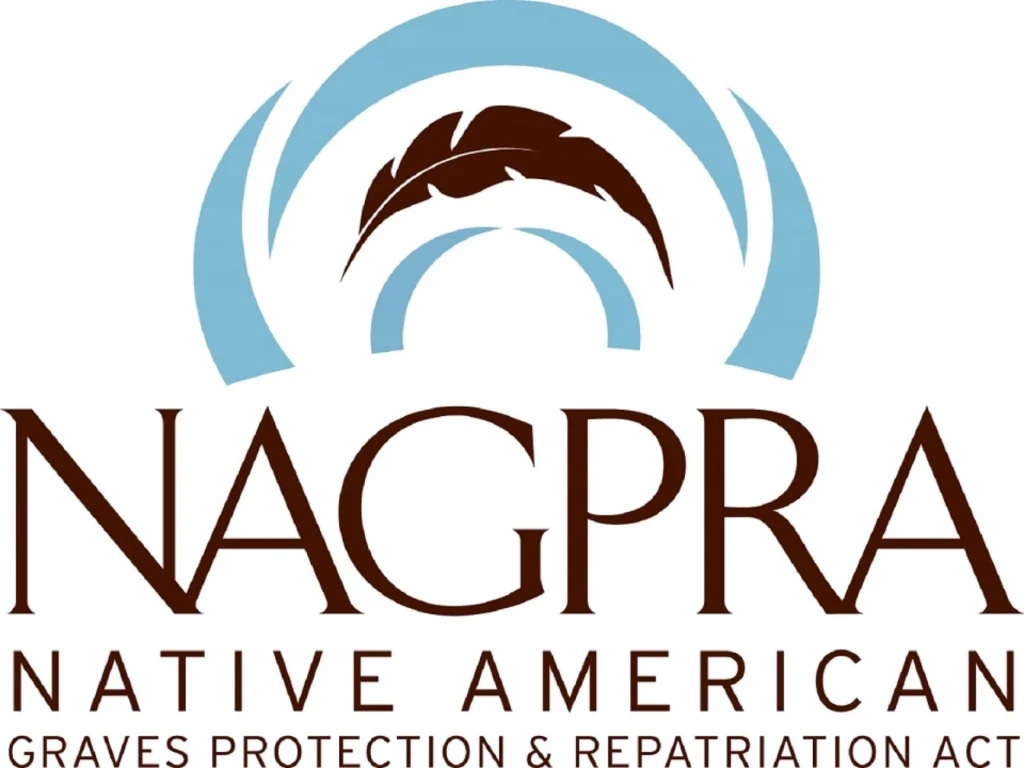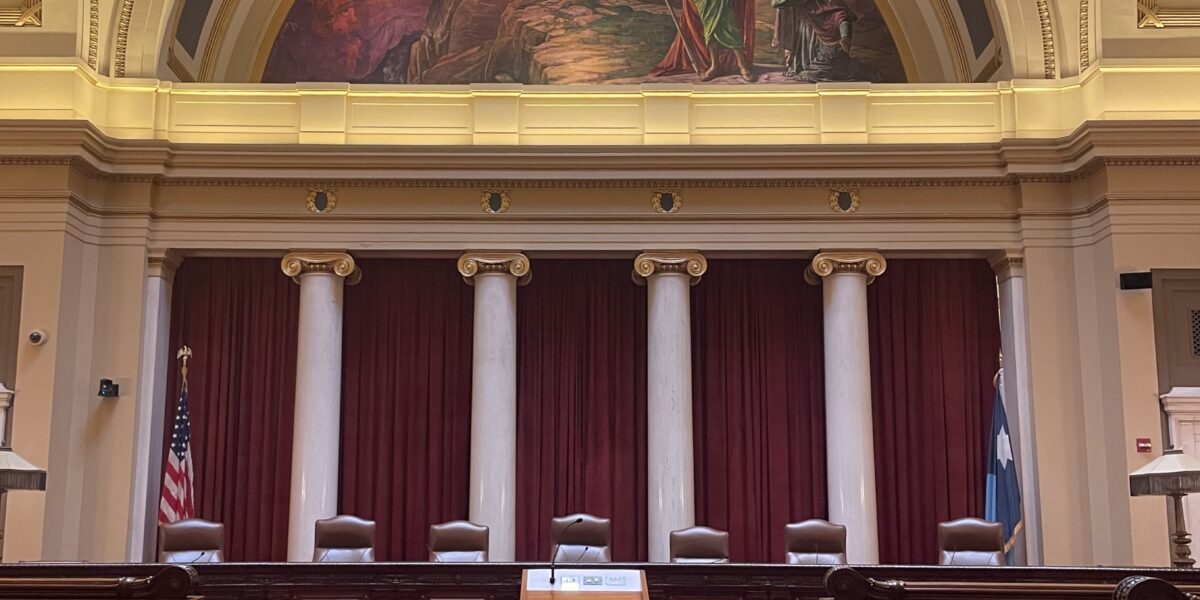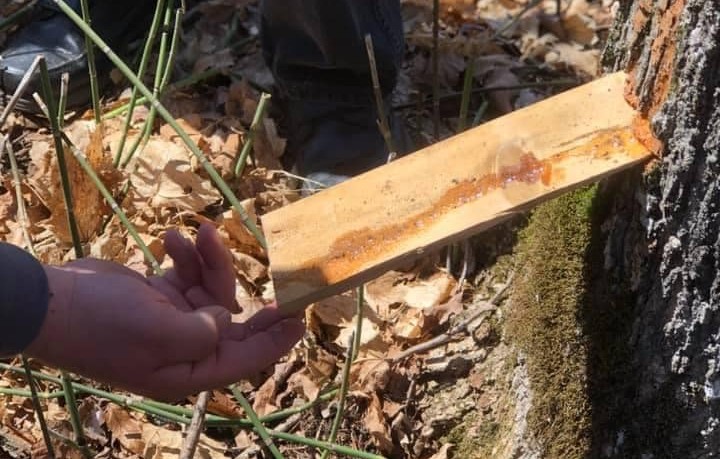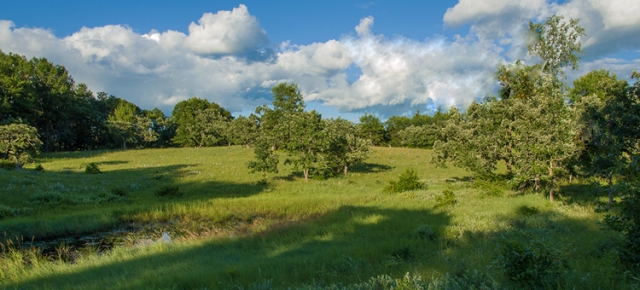
The Native American Graves Protection and Repatriation Act or NAGPRA, was recently amended and the new rules became effective this year. Reporter Travis Zimmerman examines how these changes will impact tribal communities and the institutions they work with.
Travis Zimmerman: Since 1990, Native American Graves Protection and Repatriation Act, known as NAGPRA, has been federal law. It exists to protect and return Native American human remains, funerary and sacred objects, and objects of cultural patrimony to their tribal communities. This law acknowledges that human remains removed from Federal and tribal lands belong to lineal descendants, Indian Tribes and Native Hawaiian Organizations. It also encourages museums and tribes to work together on how best to repatriate human remains and funerary objects and how to respectfully care for and exhibit other items. Changes to the act were proposed to congress in October 2022 and went into effect on January 12th, 2024.
TZ: One of the changes that took effect this year included strengthening the authority of the role of tribes. Michael Wilson, the Tribal Historic Preservation Officer for the Mille Lacs Band of Ojibwe, agrees that is an important change.
Michael Wilson: The power to make decisions from the institutions and places it where it should have been in the beginning of NAGPRA, and I feel, in the spirit of the legislation, places it in the hands of tribal representatives and tribal nations, tribal entities, so it removes that from the institute. So, there are fewer opportunities for the Institute to say “Oh, well that’s not yours” or “Well, that’s not a funerary object.”
TZ: As the Compliance Officer for the Prairie Island Tribal Historic Preservation Office, Franky Jackson, has had to deal with institutions requesting verification of remains and objects, and has had to identify if they were culturally affiliated as Dakota. Sometimes, that is hard to prove, and it means that the remains and objects are labeled culturally unidentifiable and are not returned to the tribe.
Franky Jackson: I think we have to also acknowledge another element of this rule change from eliminating the category of culturally unidentifiable human remains.
TZ: Wilson says that this is a big win for tribal nations.
MW: The one I really like is the removal of “culturally unidentifiable” as a category. And that’s been a loophole, I think for a long time that a lot of institutions have used to keep from having to engage honestly, is repatriation issues. So the removal of that language to me is a is a big win.
TZ: Another change is the requirement that museums and federal agencies obtain free, prior and informed consent from lineal descendants, Tribes and Native Hawaiian Organizations before allowing any exhibition of, access to, or research on human remains or cultural items. This change led the American Museum of Natural History in New York to close two of its exhibit halls, and the Field Museum of Chicago to cover some of their displays. The Peabody Museum of Archaeology and Ethnology at Harvard University has also begun to remove funerary objects from their exhibits. Wilson explains the significance of these actions.
MW: The fact that they had to cover displays, you know, when the new law was passed, I think is indicative of what they have on display and how they regard those particular objects. It’s telling, when they have to cover displays, cover their prizes.
TZ: Other changes to NAGPRA deal directly with reporting items or collections previously unreported and updating inventories of human remains and associated funerary objects. The Minnesota Indian Affairs Council, or MIAC, is the steward of human remains that are currently held at Hamline University. Both Jackson and Wilson, express optimism about how tribes will work together to do the right thing and get this important work done.
FJ: The issue around the 400 and some relatives that are sitting in Hamline’s collection – Some of these individuals have been sitting in boxes for well over 100 years. We don’t need to get into tug-of-war matches over cultural affiliation over tribal affiliation. Everybody wants to get our relatives out of Hamline, out of that collection and there’s a lot of things that complicate those questions as to where and when, but you have the 11 tribes working cooperatively make that happen.
TZ: For Minnesota Native News, this is Travis Zimmerman
More from Minnesota Native News
- Indian Child Welfare Law Challenged at MN Supreme Court and Native Nations Impacted by Proposed SAVE Act
 TRANSCRIPT [sound element: flute music] HOST Marie Rock: This is Minnesota Native News. I’m Marie Rock. This week, the Minnesota Supreme Court heard arguments in a case that could reshape child custody laws for Native American children. At the heart of the case is a challenge to the Minnesota Indian Family Preservation Act, or MIFPA. …
TRANSCRIPT [sound element: flute music] HOST Marie Rock: This is Minnesota Native News. I’m Marie Rock. This week, the Minnesota Supreme Court heard arguments in a case that could reshape child custody laws for Native American children. At the heart of the case is a challenge to the Minnesota Indian Family Preservation Act, or MIFPA. … - The Sugarbush Tradition Continues in Minnesota’s Urban Areas, and Khayman Goodsky’s New Film
 ANCHOR Marie Rock: This is Minnesota Native News, I’m Marie Rock. This week, we hear about Minnesotans continuing the old tradition of sugarbush in urban areas. Plus, a look at a recent Indigenous film screened at Duluth’s Minnesota Film Festival. First, let’s go to Deanna StandingCloud. Deanna StandingCloud: For Indigenous woodlands people in Minnesota, the …
ANCHOR Marie Rock: This is Minnesota Native News, I’m Marie Rock. This week, we hear about Minnesotans continuing the old tradition of sugarbush in urban areas. Plus, a look at a recent Indigenous film screened at Duluth’s Minnesota Film Festival. First, let’s go to Deanna StandingCloud. Deanna StandingCloud: For Indigenous woodlands people in Minnesota, the … - Sherburne National Wildlife Refuge Faces Staffing Cuts; Headlines Affecting Indigenous Minnesotans
 ANCHOR Marie Rock: This is Minnesota Native News, I’m Marie Rock. This week, we hear about the impact of recent federal staffing cuts on Zimmerman, Minnesota’s Sherburne National Wildlife Refuge. Plus, some current events affecting Indigenous nations here in Minnesota. First, let’s hear from Deanna StandingCloud. Deanna StandingCloud: The Sherburne National Wildlife Refuge announced earlier this …
ANCHOR Marie Rock: This is Minnesota Native News, I’m Marie Rock. This week, we hear about the impact of recent federal staffing cuts on Zimmerman, Minnesota’s Sherburne National Wildlife Refuge. Plus, some current events affecting Indigenous nations here in Minnesota. First, let’s hear from Deanna StandingCloud. Deanna StandingCloud: The Sherburne National Wildlife Refuge announced earlier this …
Subscribe to Minnesota Native News in your favorite podcast app

 Dr. Michael Migizi Sullivan: Teaching Language Learners in the Modern-Day Classroom
Dr. Michael Migizi Sullivan: Teaching Language Learners in the Modern-Day Classroom